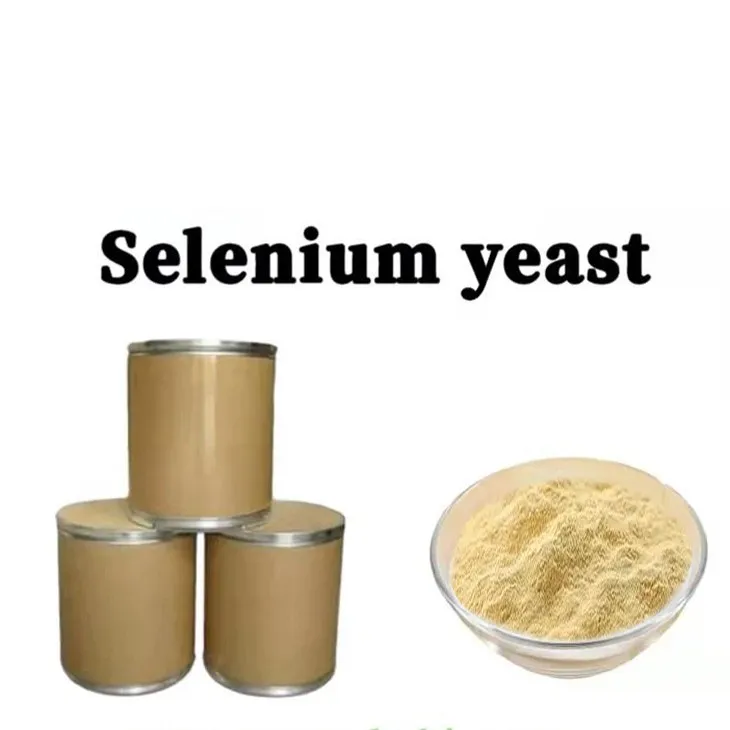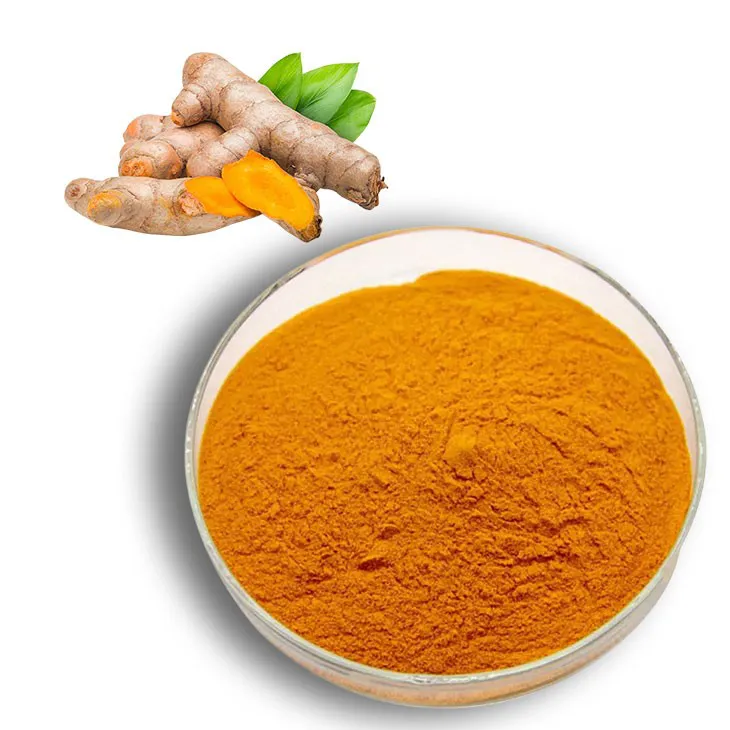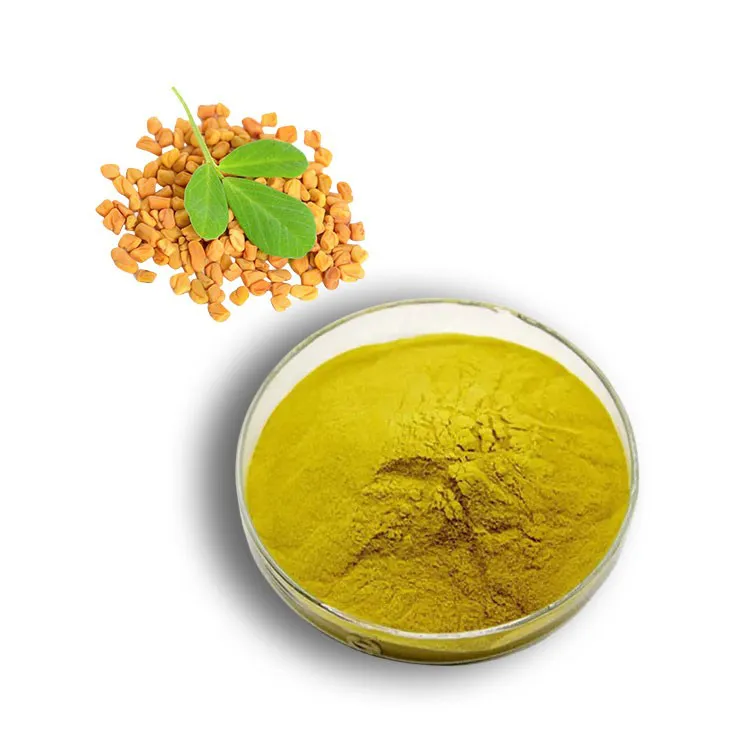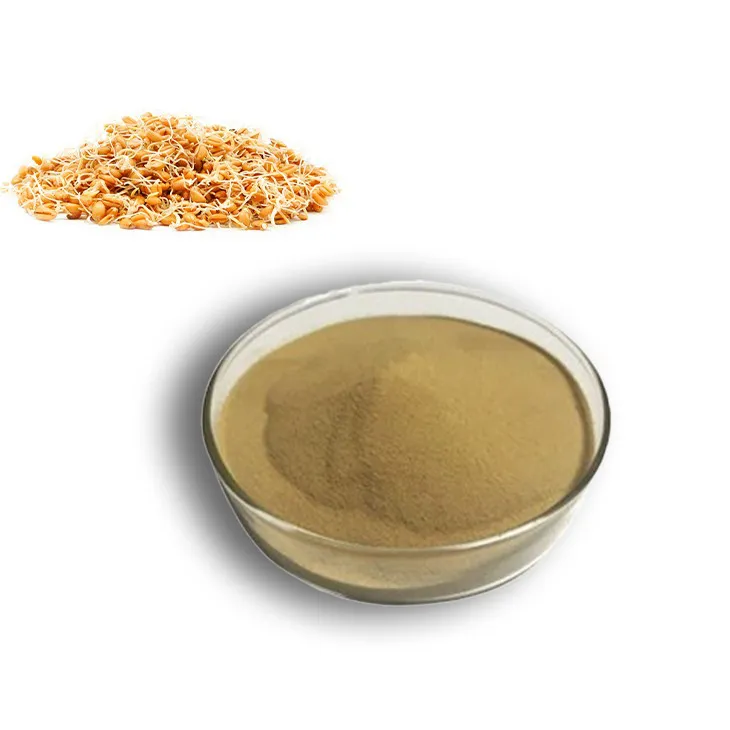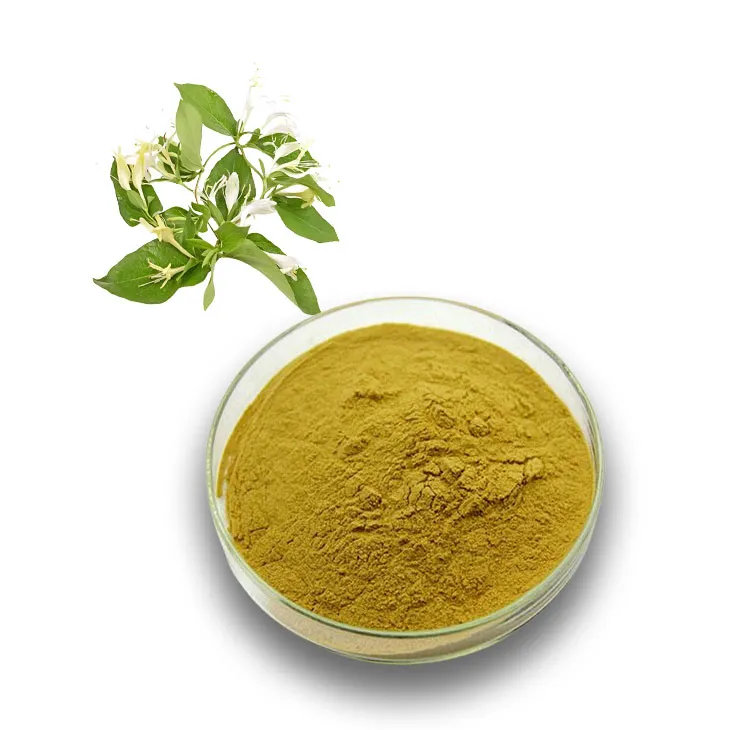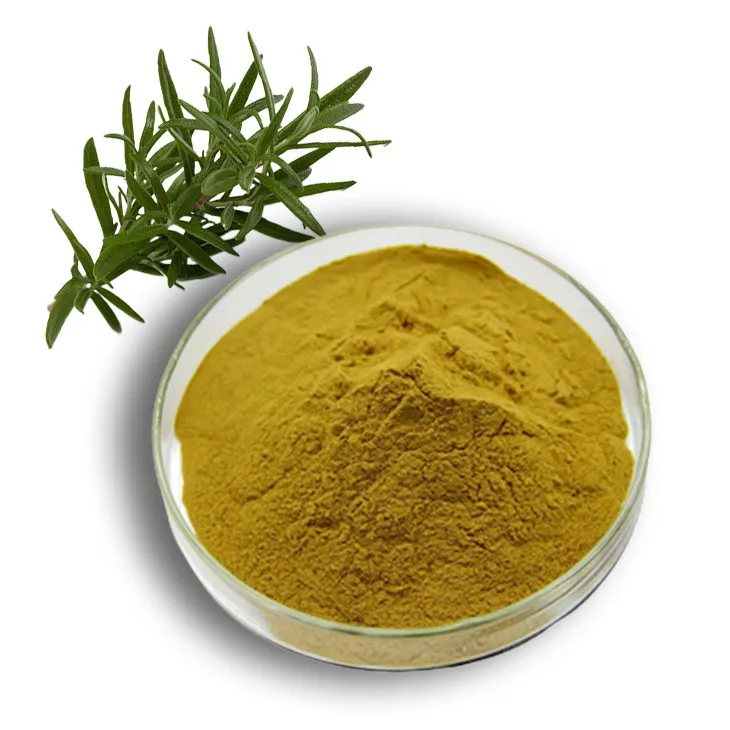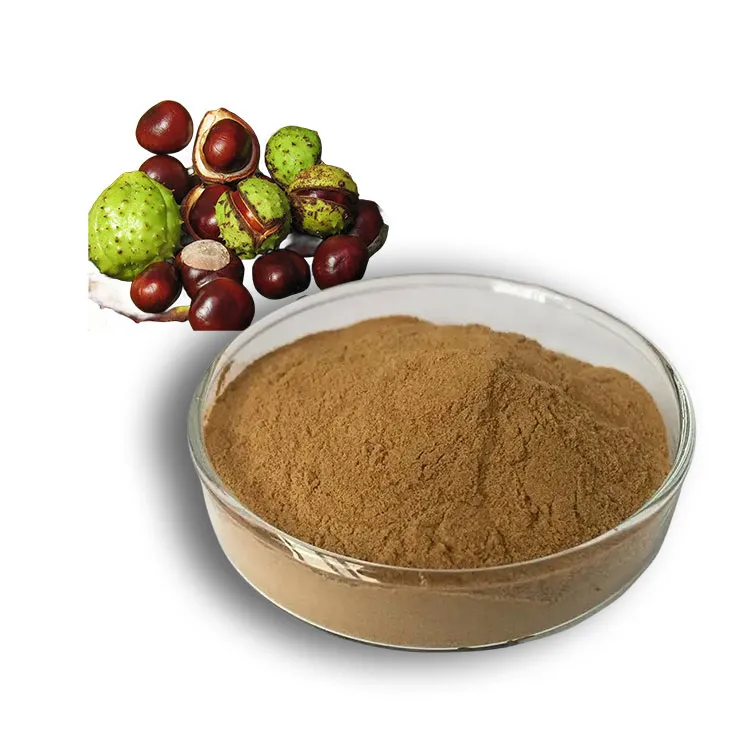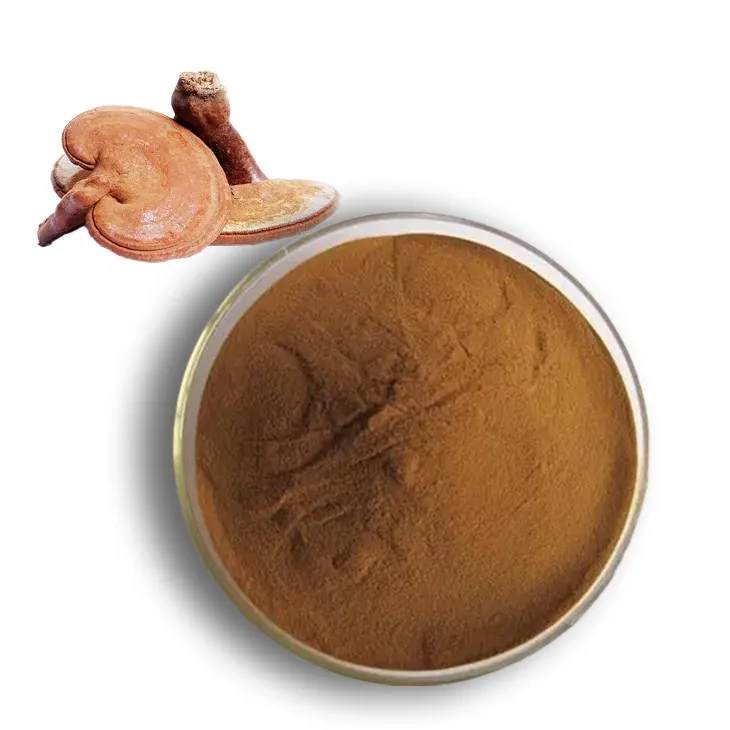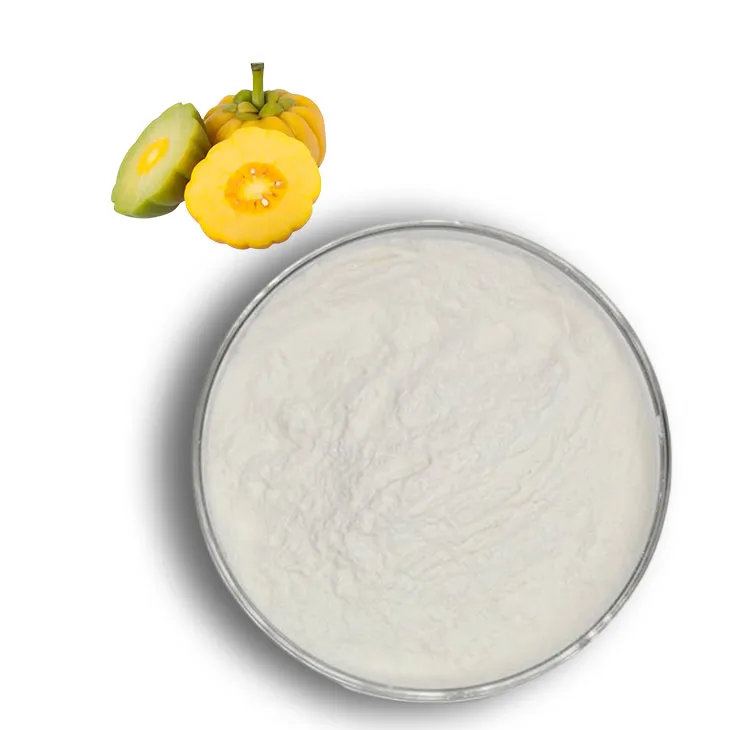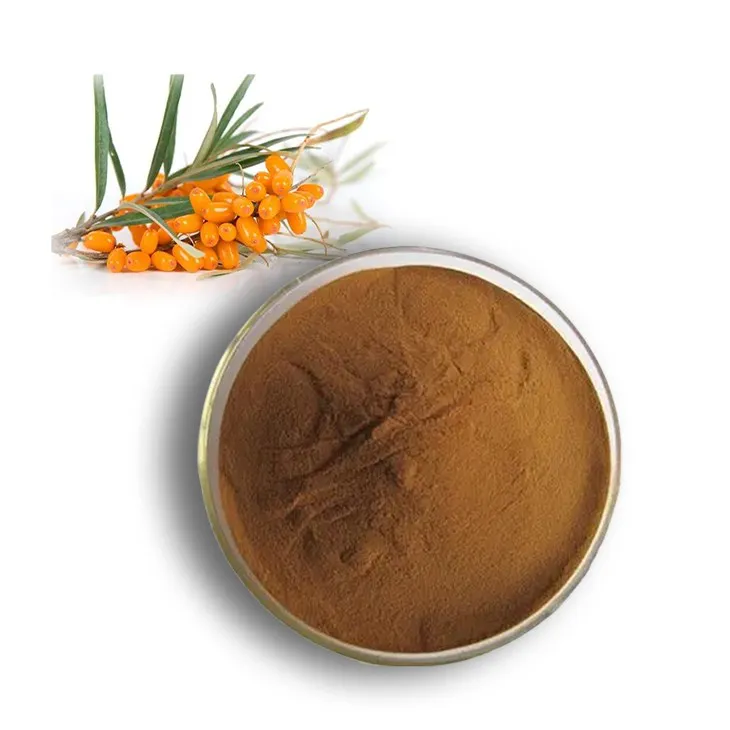- 0086-571-85302990
- sales@greenskybio.com
citrus bioflavonoids extract
2023-09-27
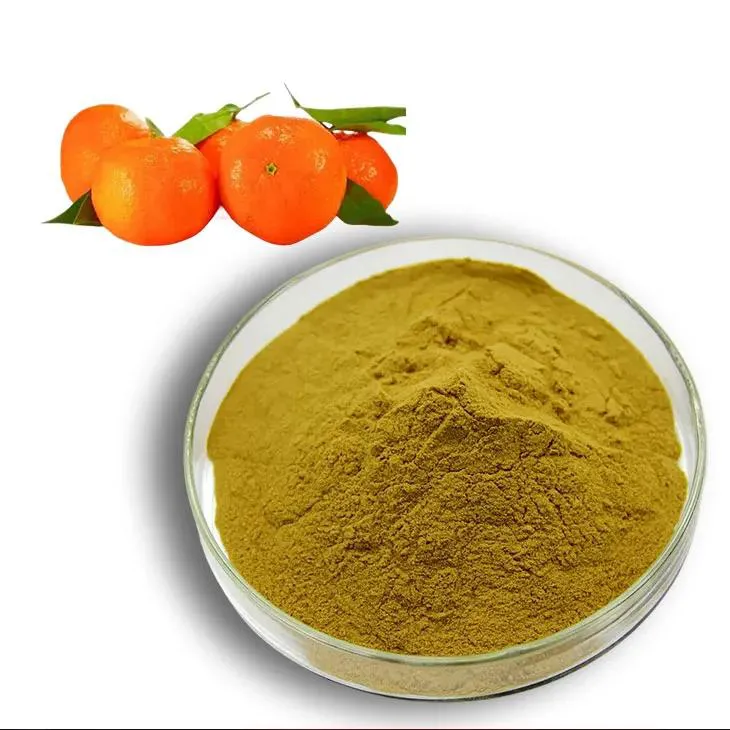
1. Chemical Composition and Structure
1. Chemical Composition and Structure
Citrus bioflavonoids are a diverse group of naturally occurring compounds found predominantly in citrus fruits, including oranges, lemons, grapefruits, and limes. They are part of a larger class of plant secondary metabolites known as flavonoids, which are characterized by their aromatic ring structures and the presence of hydroxyl groups. The chemical composition and structure of citrus bioflavonoids are intricate and contribute to their wide range of biological activities.
Chemical Structure:
The basic structure of flavonoids consists of 15 carbon atoms arranged in three phenyl rings (A, B, and C). In the case of citrus bioflavonoids, they are primarily flavanones and flavones, which have a dihydroxylated B ring. The most common citrus bioflavonoids include hesperidin, naringin, and Quercetin, each with unique substitutions on the core structure.
- Hesperidin is a flavanone glycoside that consists of hesperetin linked to a rhamnose sugar molecule.
- Naringin is another flavanone glycoside, similar to hesperidin but with a neohesperidoside moiety.
- Quercetin is a flavonol with a keto group at position 4 and is often found in glycosylated forms, such as rutin, which has a rhamnose and glucose attached.
Chemical Composition:
The composition of citrus bioflavonoids can vary depending on the type of citrus fruit and its growing conditions. They are typically accompanied by other bioactive compounds such as ascorbic acid (vitamin C), carotenoids, and limonoids, which can enhance their overall health-promoting effects.
- Hydroxylation Pattern: The presence of hydroxyl groups on the A and B rings allows for hydrogen bonding and contributes to the solubility and stability of these compounds in biological systems.
- Glycosylation: Many citrus bioflavonoids exist as glycosides, which are conjugates of the aglycone (the core flavonoid structure without the sugar) with one or more sugar molecules. This modification can affect their bioavailability and biological activity.
Stereochemistry:
The stereochemistry of citrus bioflavonoids, particularly the configuration at the chiral centers, can influence their taste, solubility, and interactions with biological receptors. For example, the stereochemistry of the glycosidic linkage in naringin affects its bitterness.
Understanding the chemical composition and structure of citrus bioflavonoids is crucial for elucidating their mechanisms of action and optimizing their extraction and application in various fields. As research progresses, the intricate details of these compounds continue to reveal their potential in health and industry.
2. Sources of Citrus Bioflavonoids
2. Sources of Citrus Bioflavonoids
Citrus bioflavonoids are a diverse group of plant secondary metabolites that are predominantly found in citrus fruits. These compounds are responsible for the vibrant colors and various health benefits associated with citrus fruits. The primary sources of citrus bioflavonoids include:
Oranges (Citrus sinensis): Oranges are one of the most common sources of bioflavonoids, particularly hesperidin and naringenin. They are widely cultivated and consumed around the world.
Lemons (Citrus limon): Lemons are another citrus fruit rich in bioflavonoids, with eriocitrin being one of the most abundant types found in them.
Grapefruits (Citrus paradisi): Grapefruits contain a variety of bioflavonoids, including naringenin and naringin, which are beneficial for health.
Tangerines and Mandarins (Citrus reticulata): These smaller citrus fruits are also good sources of bioflavonoids, with hesperidin being a major component.
Limes (Citrus aurantifolia): Limes, like lemons, are rich in eriocitrin and other bioflavonoids.
Pomelos (Citrus maxima): Pomelos are another citrus fruit with a high content of bioflavonoids, including naringin and hesperidin.
Citrus peels and membranes: The peels and white membranes (albedo) of citrus fruits are particularly rich in bioflavonoids compared to the edible flesh.
Citrus juices and concentrates: Juices extracted from citrus fruits are also sources of bioflavonoids, although the concentration may vary depending on the extraction process.
Citrus by-products: The by-products of citrus processing, such as pomace and peel extracts, are valuable sources of bioflavonoids and are often utilized in the food and pharmaceutical industries.
The bioflavonoid content in citrus fruits can vary depending on factors such as the variety of the fruit, growing conditions, ripeness, and processing methods. However, the presence of these beneficial compounds in citrus fruits makes them an important dietary source for obtaining bioflavonoids and their associated health benefits.
3. Extraction Techniques and Methods
3. Extraction Techniques and Methods
Citrus bioflavonoids, a diverse group of plant secondary metabolites, are known for their wide range of health benefits. The extraction of these valuable compounds from citrus fruits is a critical process that can significantly impact their yield, purity, and bioactivity. Several extraction techniques and methods have been developed to optimize the recovery of bioflavonoids from various citrus sources. Here, we discuss the most common and emerging methods used in the extraction of citrus bioflavonoids.
3.1 Traditional Extraction Techniques
Traditional extraction methods, such as solvent extraction and maceration, have been used for centuries. These methods involve soaking the citrus peels or pulp in a solvent, such as ethanol, methanol, or water, to dissolve the bioflavonoids. The solvent is then evaporated, leaving behind a concentrated extract.
3.2 Ultrasonic-Assisted Extraction (UAE)
Ultrasonic-assisted extraction is a modern technique that uses ultrasonic waves to disrupt the cell walls of the citrus fruits, facilitating the release of bioflavonoids. This method is efficient, requires less solvent, and can be completed in a shorter time compared to traditional methods.
3.3 Microwave-Assisted Extraction (MAE)
Microwave-assisted extraction utilizes microwave energy to heat the sample, which accelerates the extraction process and improves the solubility of bioflavonoids. MAE is known for its high efficiency, energy savings, and minimal degradation of heat-sensitive compounds.
3.4 Supercritical Fluid Extraction (SFE)
Supercritical fluid extraction, particularly using carbon dioxide, is a highly efficient and selective method for extracting bioflavonoids. The supercritical fluid has unique properties, such as low viscosity and high diffusion rates, which allow for rapid and selective extraction without the use of organic solvents.
3.5 Pressurized Liquid Extraction (PLE)
Also known as accelerated solvent extraction, PLE uses high pressure and temperature to enhance the solubility and diffusion of bioflavonoids into the solvent. This method is advantageous for its speed, reduced solvent use, and the ability to extract a wide range of compounds.
3.6 Solid-Phase Extraction (SPE)
Solid-phase extraction is a chromatography-based technique that involves the use of a solid sorbent to selectively retain bioflavonoids from a liquid sample. After loading the sample, the unbound compounds are washed away, and the retained bioflavonoids are eluted using a suitable solvent.
3.7 Membrane-Assisted Extraction
Membrane-assisted extraction techniques, such as ultrafiltration and reverse osmosis, use semipermeable membranes to selectively separate bioflavonoids from other components in the citrus extracts.
3.8 Enzyme-Assisted Extraction
Enzyme-assisted extraction involves the use of enzymes to break down the complex structures in citrus fruits, making the bioflavonoids more accessible for extraction. This method is particularly useful for enhancing the yield and quality of the extracted compounds.
3.9 Green Extraction Techniques
Green chemistry principles have inspired the development of environmentally friendly extraction methods, such as the use of ionic liquids, deep eutectic solvents, and aqueous two-phase systems. These methods aim to minimize the use of hazardous solvents and reduce the environmental impact of the extraction process.
3.10 Conclusion of Extraction Techniques
The choice of extraction method depends on various factors, including the desired purity and yield of bioflavonoids, the nature of the starting material, and the environmental and economic considerations. Advances in extraction technologies continue to improve the efficiency and sustainability of bioflavonoid extraction from citrus sources.
4. Health Benefits of Citrus Bioflavonoids
4. Health Benefits of Citrus Bioflavonoids
Citrus bioflavonoids, a diverse group of plant secondary metabolites, have garnered significant attention for their potential health benefits. These compounds are known for their wide range of biological activities that contribute to human health and well-being.
4.1 Cardiovascular Health
One of the most well-documented benefits of citrus bioflavonoids is their positive impact on cardiovascular health. They are known to strengthen capillaries, reduce inflammation, and lower blood pressure. The antioxidant properties of these compounds also help to prevent LDL cholesterol oxidation, which is a key factor in the development of atherosclerosis.
4.2 Anti-Cancer Properties
Citrus bioflavonoids have shown promise in cancer prevention and treatment due to their ability to inhibit cancer cell growth and induce apoptosis in cancer cells. They also have the potential to modulate the activity of enzymes involved in carcinogen metabolism, thus reducing the risk of cancer development.
4.3 Immune System Support
The immune-modulating effects of citrus bioflavonoids are another area of interest. They can enhance the immune response by stimulating the production of cytokines and other immune system messengers, which can help the body fight off infections and diseases more effectively.
4.4 Anti-Viral and Anti-Bacterial Activities
Some citrus bioflavonoids have demonstrated anti-viral and anti-bacterial properties, making them potentially useful in the prevention and treatment of various infectious diseases.
4.5 Skin Health
For skin health, citrus bioflavonoids can protect against UV-induced damage, reduce skin inflammation, and promote collagen synthesis, which can help maintain skin elasticity and reduce the appearance of wrinkles.
4.6 Cognitive Function
Emerging research suggests that citrus bioflavonoids may also play a role in supporting cognitive function and may help to delay the onset of neurodegenerative diseases by reducing oxidative stress and inflammation in the brain.
4.7 Bone Health
Citrus bioflavonoids have been linked to improved bone health, potentially reducing the risk of osteoporosis by promoting bone mineralization and reducing bone resorption.
4.8 Vision Protection
Due to their antioxidant properties, citrus bioflavonoids can protect the eyes from oxidative damage, potentially reducing the risk of age-related macular degeneration and cataracts.
4.9 Conclusion
The health benefits of citrus bioflavonoids are multifaceted, ranging from cardiovascular support to cognitive function enhancement. As research continues to uncover more about these compounds, their potential applications in health and wellness are likely to expand. However, it is important to note that while these benefits are promising, more clinical studies are needed to fully understand the mechanisms of action and optimal dosages for various health conditions.
5. Antioxidant Properties
5. Antioxidant Properties
Citrus bioflavonoids are renowned for their potent antioxidant properties, which are crucial in protecting the body against oxidative stress and the harmful effects of free radicals. These natural compounds function by neutralizing free radicals, thereby preventing cellular damage and reducing the risk of various diseases associated with oxidative stress.
Mechanisms of Antioxidant Action
The antioxidant properties of citrus bioflavonoids can be attributed to several mechanisms of action:
1. Free Radical Scavenging: Citrus bioflavonoids donate electrons to neutralize free radicals, thereby preventing them from causing further damage to cells.
2. Metal Ion Chelation: They can bind to metal ions, such as iron and copper, which are often involved in the generation of free radicals through the Fenton reaction. By chelating these ions, bioflavonoids reduce the formation of reactive oxygen species (ROS).
3. Enzyme Inhibition: Citrus bioflavonoids can inhibit enzymes that are involved in the production of ROS, such as xanthine oxidase and lipoxygenase.
4. Regulation of Antioxidant Genes: Some bioflavonoids have been shown to modulate the expression of genes involved in the body's antioxidant defense system, enhancing the production of endogenous antioxidants.
Types of Citrus Bioflavonoids and Their Antioxidant Activity
Different types of citrus bioflavonoids exhibit varying degrees of antioxidant activity:
1. Hesperidin: A flavanone glycoside found in citrus fruits, hesperidin has been shown to have significant antioxidant effects.
2. Naringin: A bitter flavonoid found in grapefruits, naringin is known for its ability to combat oxidative stress.
3. Eriocitrin: A flavanone glycoside similar to hesperidin, eriocitrin is also a potent antioxidant.
4. Diosmin: Although primarily known for its vascular protective effects, Diosmin also exhibits antioxidant properties.
5. Tangeretin: A flavonoid found in tangerines, tangeretin has been linked to the reduction of oxidative stress in various studies.
Health Implications of Antioxidant Properties
The antioxidant properties of citrus bioflavonoids have significant implications for human health:
1. Cancer Prevention: By neutralizing free radicals, citrus bioflavonoids may help prevent the initiation and progression of cancer.
2. Cardiovascular Health: They can protect against atherosclerosis by reducing oxidative damage to LDL cholesterol.
3. Neuroprotection: Citrus bioflavonoids may help protect neurons from oxidative stress, which is implicated in neurodegenerative diseases such as Alzheimer's and Parkinson's.
4. Anti-Aging: By combating oxidative stress, these bioflavonoids may contribute to slowing down the aging process at the cellular level.
5. Immune System Support: The antioxidant effects can also support a healthy immune system by protecting immune cells from oxidative damage.
In conclusion, the antioxidant properties of citrus bioflavonoids are a key aspect of their health-promoting effects. As research continues to uncover the full spectrum of their benefits, it is likely that the use of these natural compounds in health and wellness applications will continue to grow.
6. Anti-inflammatory Effects
6. Anti-inflammatory Effects
Inflammation is a natural response of the body to injury or infection, but chronic inflammation can lead to various health issues. Citrus bioflavonoids have been found to possess anti-inflammatory properties, which can help in reducing inflammation and alleviating related symptoms.
One of the primary ways in which citrus bioflavonoids exert their anti-inflammatory effects is by inhibiting the production of pro-inflammatory cytokines. These are signaling molecules that play a crucial role in the inflammatory response. By reducing the levels of these cytokines, citrus bioflavonoids can help to suppress inflammation.
Another mechanism through which citrus bioflavonoids can reduce inflammation is by modulating the activity of enzymes involved in the inflammatory process. For example, they can inhibit the activity of cyclooxygenase (COX) and lipoxygenase (LOX) enzymes, which are responsible for the production of prostaglandins and leukotrienes, respectively. These compounds are known to promote inflammation.
Additionally, citrus bioflavonoids have been shown to have anti-inflammatory effects by reducing oxidative stress. Oxidative stress can trigger an inflammatory response, and by scavenging free radicals and reducing oxidative stress, citrus bioflavonoids can help to prevent inflammation.
Clinical studies have also demonstrated the anti-inflammatory effects of citrus bioflavonoids. For instance, a study published in the Journal of Agricultural and Food Chemistry found that hesperidin, a flavanone glycoside found in citrus fruits, exhibited significant anti-inflammatory activity in animal models.
In summary, the anti-inflammatory effects of citrus bioflavonoids can be attributed to their ability to inhibit the production of pro-inflammatory cytokines, modulate the activity of enzymes involved in inflammation, and reduce oxidative stress. These properties make citrus bioflavonoids a promising natural alternative for managing inflammation and related health conditions.
7. Applications in the Food and Pharmaceutical Industry
7. Applications in the Food and Pharmaceutical Industry
Citrus bioflavonoids have a wide range of applications in both the food and pharmaceutical industries due to their diverse health benefits and functional properties. Here are some of the key applications:
Food Industry:
1. Flavor Enhancement: Citrus bioflavonoids, particularly hesperidin and naringenin, are known for their distinctive citrus flavor, making them ideal for enhancing the taste of various food products.
2. Preservative: Due to their antioxidant properties, bioflavonoids can extend the shelf life of food products by preventing oxidation and spoilage.
3. Color Stabilization: Bioflavonoids help maintain the vibrant color of foods, especially in fruit-based products, by preventing enzymatic browning.
4. Health Supplements: As a natural source of antioxidants and other beneficial compounds, citrus bioflavonoids are used in dietary supplements to promote overall health.
5. Functional Foods: They are incorporated into functional foods designed to provide specific health benefits, such as immune support or cardiovascular health.
Pharmaceutical Industry:
1. Medicinal Compounds: Citrus bioflavonoids are used in the development of pharmaceuticals for their anti-inflammatory, antiviral, and anticancer properties.
2. Drug Delivery Systems: Bioflavonoids can be used to improve the bioavailability of drugs, enhancing their effectiveness.
3. Cosmetics: In the pharmaceutical sector, which includes cosmetics, bioflavonoids are used for their skin health benefits, such as reducing inflammation and promoting collagen production.
4. Nutraceutical Development: Citrus bioflavonoids are key components in the formulation of nutraceuticals, which are products derived from food sources with extra health benefits.
5. Antimicrobial Agents: Some bioflavonoids have shown antimicrobial properties, making them useful in the development of new antibiotics.
6. Oral Health Products: Due to their anti-inflammatory and antioxidant properties, citrus bioflavonoids are used in oral health products to improve gum health and reduce plaque.
Future Prospects:
The applications of citrus bioflavonoids in the food and pharmaceutical industries are expected to expand as more research uncovers their potential health benefits and functional properties. With the growing consumer demand for natural and health-promoting ingredients, citrus bioflavonoids are likely to play a significant role in the development of innovative products in these industries.
As research continues, the potential for citrus bioflavonoids to be used in targeted therapies and personalized medicine is also being explored, which could revolutionize the way we approach health and wellness.
8. Recent Research and Developments
8. Recent Research and Developments
In recent years, there has been a surge of interest in the study of citrus bioflavonoids due to their diverse health benefits and potential applications in various industries. The following are some of the key research and developments in the field of citrus bioflavonoids:
8.1. Advances in Extraction Techniques
New and improved extraction techniques have been developed to enhance the yield and purity of citrus bioflavonoids. These include:
- Ultrasound-assisted extraction (UAE): This technique uses ultrasonic waves to break cell walls and improve the extraction efficiency of bioflavonoids.
- Supercritical fluid extraction (SFE): SFE uses supercritical fluids, such as carbon dioxide, to extract bioflavonoids at lower temperatures and pressures, resulting in higher purity and less degradation.
- Microwave-assisted extraction (MAE): MAE utilizes microwave energy to heat the extraction solvent, reducing extraction time and improving the recovery of bioflavonoids.
8.2. Identification of Novel Bioflavonoids
Recent research has led to the identification of novel bioflavonoids in citrus fruits. These newly discovered compounds have shown potential health benefits, such as:
- Citrus flavanones: A group of bioflavonoids with potential anti-cancer properties.
- Citrus polymethoxyflavones: These compounds have demonstrated neuroprotective effects and may help in the treatment of neurodegenerative diseases.
8.3. Synergistic Effects of Bioflavonoids
Studies have shown that the combination of different bioflavonoids can have synergistic effects, leading to enhanced health benefits. For example, the combination of hesperidin and naringenin has been found to be more effective in reducing inflammation than either compound alone.
8.4. Applications in Functional Foods
Citrus bioflavonoids have been incorporated into various functional foods and beverages, such as:
- Fortified fruit juices: Bioflavonoid-enriched fruit juices can provide additional health benefits to consumers.
- Health supplements: Bioflavonoid supplements are available in the form of capsules, tablets, and powders, offering a convenient way to increase bioflavonoid intake.
8.5. Clinical Trials and Studies
Clinical trials and studies are being conducted to evaluate the efficacy and safety of citrus bioflavonoids in various health conditions. These studies aim to provide scientific evidence for the health claims associated with bioflavonoids and to establish recommended daily intake levels.
8.6. Regulatory Approvals
Regulatory bodies, such as the US Food and Drug Administration (FDA) and the European Food Safety Authority (EFSA), are reviewing the safety and efficacy of citrus bioflavonoids for use in food and pharmaceutical products. Approval from these regulatory agencies can pave the way for wider acceptance and use of bioflavonoids in the market.
In conclusion, the field of citrus bioflavonoids is rapidly evolving, with ongoing research and development aimed at improving extraction techniques, identifying novel compounds, and exploring their potential health benefits and applications. As more evidence emerges, it is expected that the use of citrus bioflavonoids will continue to grow in various industries, contributing to improved health and well-being.
9. Conclusion and Future Prospects
9. Conclusion and Future Prospects
Citrus bioflavonoids have emerged as a significant class of natural compounds with a wide range of health benefits and applications. The diverse chemical composition and structure of these compounds contribute to their unique properties, which have been extensively studied and documented. From the rich sources of citrus bioflavonoids, such as oranges, lemons, and grapefruits, to the various extraction techniques and methods employed to obtain these valuable compounds, the field has seen significant advancements.
The health benefits of citrus bioflavonoids are multifaceted, with antioxidant and anti-inflammatory effects being among the most well-researched. These compounds have demonstrated the ability to combat oxidative stress, reduce inflammation, and support overall health. Their applications in the food and pharmaceutical industries are vast, ranging from enhancing the nutritional value of food products to developing novel therapeutic agents for various diseases.
Recent research and developments have further expanded our understanding of citrus bioflavonoids, revealing new insights into their mechanisms of action and potential applications. This continuous research is crucial for the development of innovative products and therapies that harness the power of these natural compounds.
Looking to the future, there are several prospects for the advancement of citrus bioflavonoids research and applications. First, the exploration of new sources and the optimization of extraction techniques will likely lead to the discovery of novel bioflavonoids with unique properties. Second, the integration of bioflavonoids into functional foods and nutraceuticals will continue to grow, driven by consumer demand for natural and health-promoting products. Third, the development of targeted therapies and personalized medicine based on the unique properties of citrus bioflavonoids will be an exciting area of research.
Furthermore, the potential of citrus bioflavonoids in addressing global health challenges, such as chronic diseases and aging populations, cannot be overlooked. As research continues to uncover the full spectrum of their benefits, the role of citrus bioflavonoids in promoting health and well-being is expected to become increasingly prominent.
In conclusion, the study and application of citrus bioflavonoids are thriving fields with immense potential for growth and innovation. As our understanding of these compounds deepens, so too will their impact on health, nutrition, and medicine. The future of citrus bioflavonoids looks bright, with the promise of new discoveries and applications that will continue to enhance our lives and improve our health.
- ▶ Hesperidin
- ▶ Citrus Bioflavonoids
- ▶ Plant Extract
- ▶ lycopene
- ▶ Diosmin
- ▶ Grape seed extract
- ▶ Sea buckthorn Juice Powder
- ▶ Fruit Juice Powder
- ▶ Hops Extract
- ▶ Artichoke Extract
- ▶ Mushroom extract
- ▶ Astaxanthin
- ▶ Green Tea Extract
- ▶ Curcumin
- ▶ Horse Chestnut Extract
- ▶ Other Product
- ▶ Boswellia Serrata Extract
- ▶ Resveratrol
- ▶ Marigold Extract
- ▶ Grape Leaf Extract
- ▶ New Product
- ▶ Aminolevulinic acid
- ▶ Cranberry Extract
- ▶ Red Yeast Rice
- ▶ Red Wine Extract
-
Selenium yeast
2023-09-27
-
Curcuma Longa Extract/Turmeric extract
2023-09-27
-
Fenugreek Extract Powder
2023-09-27
-
Wheat Germ Extract
2023-09-27
-
Honeysuckle Pollen
2023-09-27
-
Rosemary extract
2023-09-27
-
Horse Chestnut Extract
2023-09-27
-
Reishi mushroom extract
2023-09-27
-
Garcinia Cambogia Extract
2023-09-27
-
Buckthorn bark extract
2023-09-27











